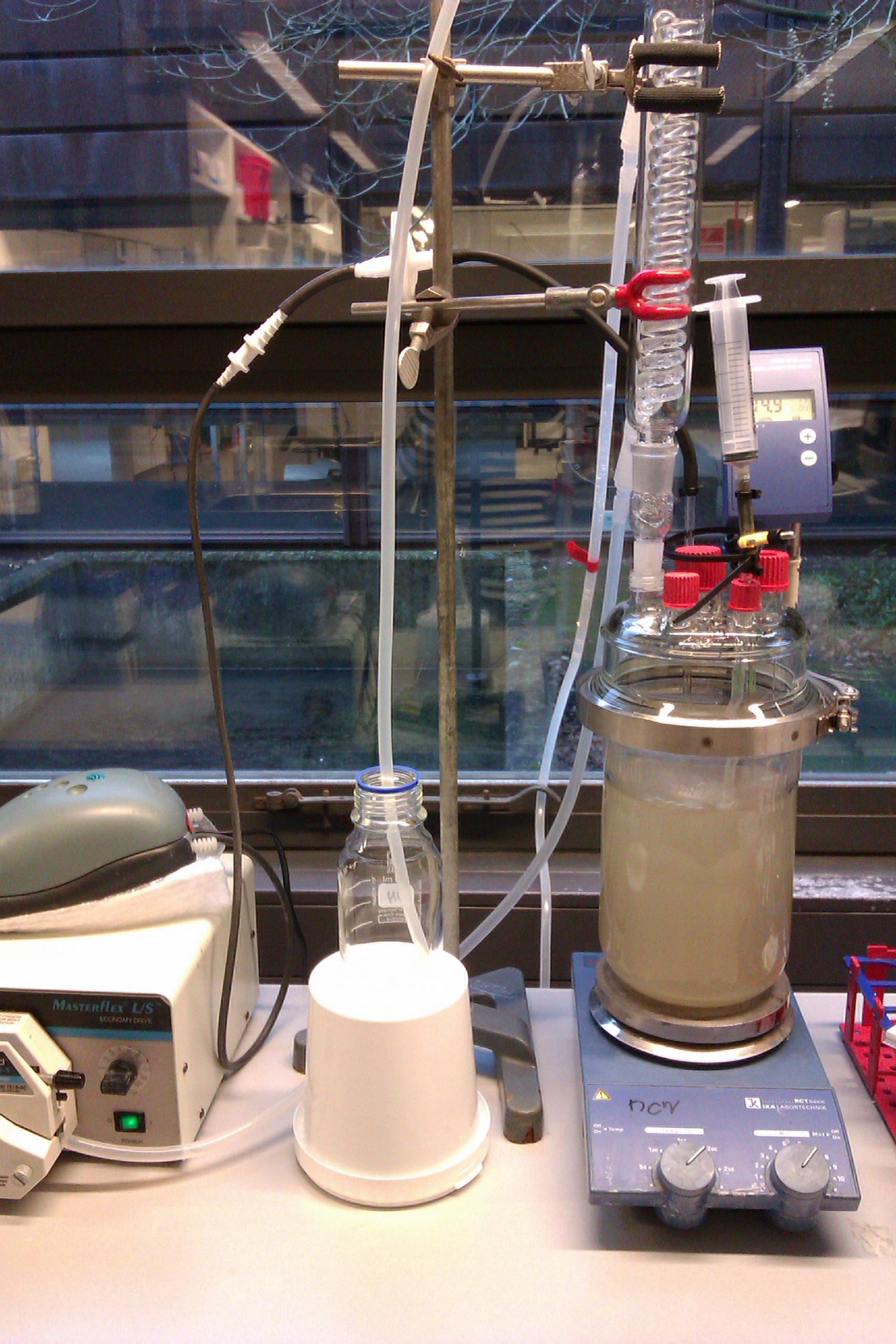Thermophilic Archaeal Lipids Stabilize Drug-Delivery Liposomes
By LabMedica International staff writers
Posted on 18 Nov 2015
The possibility of using lipids extracted from microorganisms adapted to living in conditions of extreme heat and acidity to form liposomes for oral drug-delivery, which would able to survive passage through the harsh conditions of the stomach, was discussed in a recent paper.Posted on 18 Nov 2015
To develop an oral drug delivery system suited to protect labile drug compounds like peptides and proteins against the harsh environment in the stomach and upper intestine, investigators at the University of Southern Denmark (Odense) prepared liposomes from phospholipids, cholesterol, and archaeal lipids. As source for the archaeal lipids they used Sulfolobus islandicus, a hyperthermophilic archaeon, whose lipids have not been used in liposomes before.

Image: S. islandicus being grown in laboratory mass culture (Photo courtesy of the University of Southern Denmark).
S. islandicus requires an extreme environment that is 75–80 degrees Celsius hot with an acid pH of two to three. Due to the high temperatures, this organism needs to have extremely stable biomolecules in order to survive. Without increased stability in the membrane the cell would fall apart, and too many molecules would flow in and out of the membrane destroying the chemical gradients the cell uses as energy, while also allowing all the proteins the cell had synthesized to diffuse away, stopping the cell's metabolic processes.
The archaeal membrane still contains phosphate groups and long fatty acid tails, but they also contain ether linkages instead of ester linkages. The ether linkages make the bonds between phosphate groups and hydrocarbons more stable because the carbon connecting the phosphate group and glycerol molecule is more electron-rich than it would be in an ester, making that carbon less electrophilic and therefore less chemically reactive. This allows the ester-linked phospholipid to be more stable and less susceptible to breakdown from large amounts of increased thermal energy. This contributes to the archaea's ability to live in such extreme environments.
The investigators isolated cell membrane lipids from S. islandicus cultures and combined them with conventional phospholipids (from egg yolk or soybean oil) and cholesterol in order to make liposomes. The mixture contained 18% S. islandicus lipid molecules and 78% phospholipids/cholesterol. The liposomes were loaded with a dye, so their fate could be determined following exposure to bile salts from gastric juice.
Results published in the September, 30, 2015, issue of the International Journal of Pharmaceutics revealed that 75% of liposomes remained intact in low bile salt concentrations for up to 90 minutes. In contrast, only 10% were still intact at high bile salt concentrations. Both the low and high concentrations were within the range that is natural in a normal human stomach.
The investigators wrote that, "Our findings showed that crude archaeal lipid extracts have, to a certain extent, stabilizing effects on liposomes similar to purified tetraether lipid fractions tested previously."
Related Links:
University of Southern Denmark















